So close to the heavens - an unparalleled art project
Large formats have always appealed to German artist Klaus Dauven. In France, he is currently conjuring up a woodland silhouette on a gigantic dam run by the French energy company Électricité de France. Instead of using paints and brushes, he creates his artworks by removing the layers of algae and moss formed by nature itself: the perfect blend of a thirst for adventure, fantasy and technical precision.
An artist with a special relationship with France
Small black dots move skilfully back and forth across the gigantic concrete wall. A turquoise lake shimmers behind them, framed by mountains. The lush, green valley sprawls at the foot of the 103-metre-high dam. For artist Klaus Dauven, a long-held dream is coming true here and now, at the Barrage de Vouglans dam.
Born in Düren, Germany, he has a special relationship with France. He travelled the country many times with his students in his days as a teacher. He is at home with French language and culture and can now finally show off his artistic talent in the country he loves – and in XXL format at that. Over weeks of hard work, a monumental piece of art – a project on an unparalleled scale – has been emerging amidst the breathtaking Jura mountains: in harmony with nature, the surroundings and the weather. “We have just had to stop for a day because it was pouring down. It was impossible for the men to abseil down in that weather,” reports Klaus Dauven. Indeed, when you move closer, the black dots begin to take shape, and the red and white ropes on which two climbers are suspended at dizzying heights become visible.
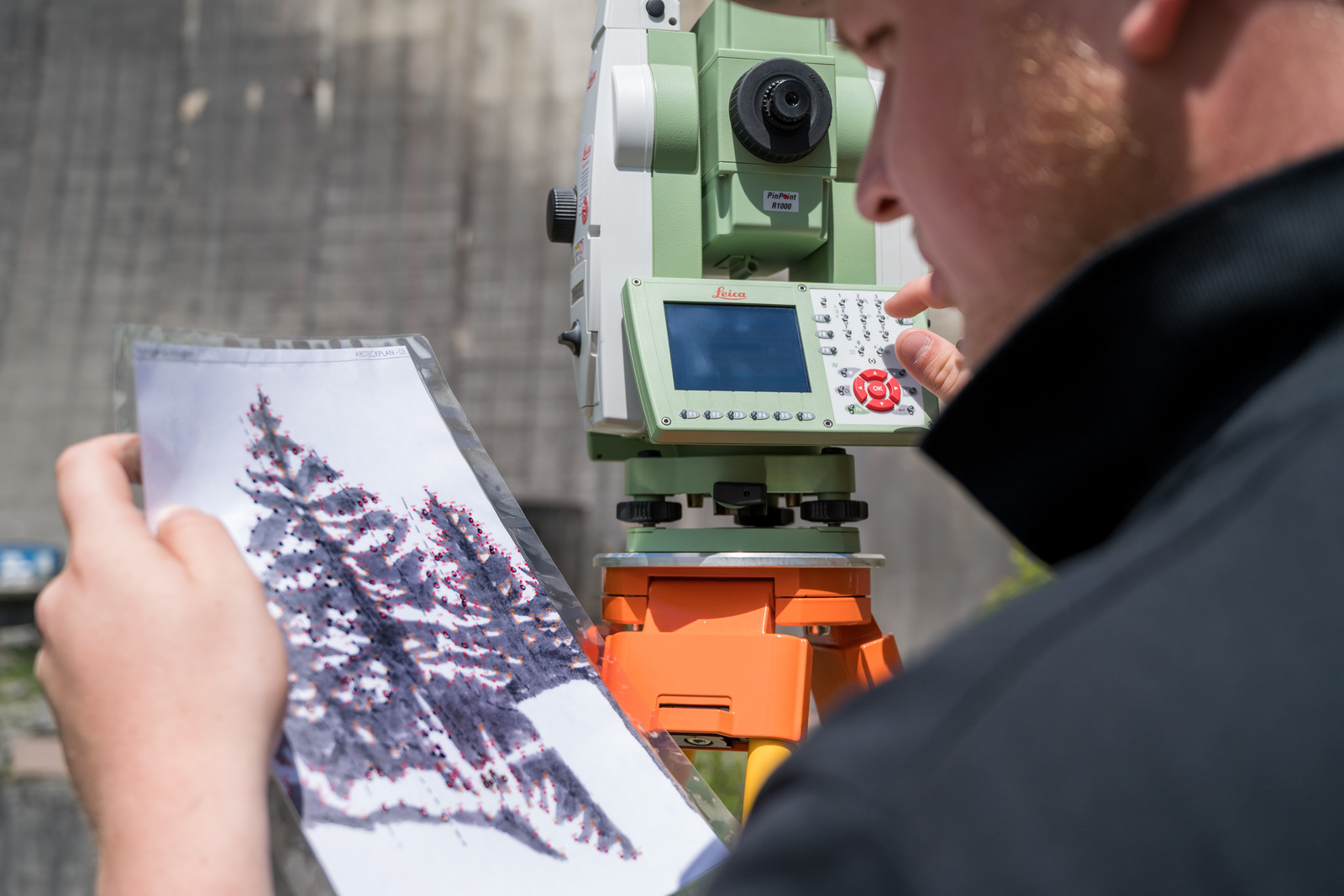
2,500 adhesive points serve as a guide
They are using biodegradable modelling clay to stick around 2,500 tiny red and yellow points to the 427-metre-long, 103-metre-high wall in line with the highly precise instructions of two surveyors, who are using their measuring instruments between bushes and trees opposite the dam. They radio instructions to the climbers: “Move your finger another 10 centimetres to the right and another 20 centimetres up!” Then the next marker made from biodegradable modelling clay is stuck on. It is highly precise work which will later form the outline of Dauven’s woodland silhouette, based on the principle of “painting by numbers”. The work is entitled “La forêt”. But instead of paint, deposits caused by the weather on the bottom section of the dam will form the artwork’s contours. The concrete will be cleaned centimetre by centimetre around the points using Kärcher high-pressure cleaners, revealing a contrast between the concrete and the patina – the blackish, naturally occurring layer of algae and moss.
A happy accident
This principle, christened “reverse graffiti”, was invented by Klaus Dauven. However, his background is not in graffiti in the slightest, and he in fact studied at the Kunstakademie (art academy) in Düsseldorf and Münster. As an artist, he has always been interested in large formats. He initially started with charcoal drawings, a material that links him to his Rhineland origins. “One day, I simply wanted to remove the charcoal residue from a piece and noticed that something special happened when I used a vacuum cleaner on the paper. The wiping and removal produces an aesthetic of its very own. It was actually a complete accident that I discovered this principle for myself in 1997,” he explains. An accident that was set to change his life. He refined his technique using specially made diamondshaped nozzles. The geometric shapes turned into house structures, outlines of factories and urban landscapes. Shortly after, Dauven also began working outdoors more and more often. He sought out locations where he could play with surfaces, light and shadow, just like in the studio. To remove substances,he soon moved on from using just a wire brush to more powerful water streams. Be it on motorway bridges, a grain silo or dams, as in Japan and Korea, for him it is always about incorporating the surroundings of the artwork into the design.
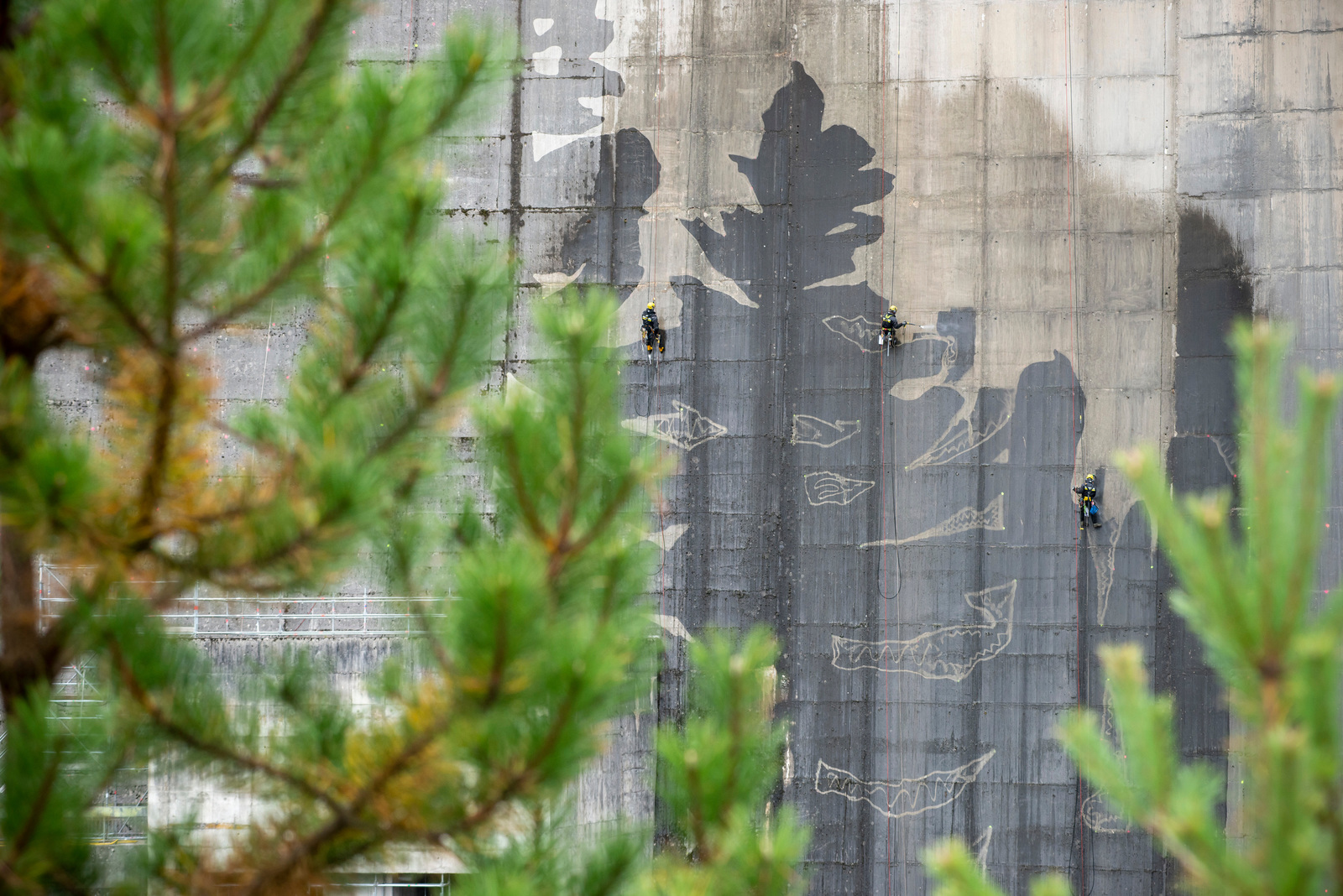
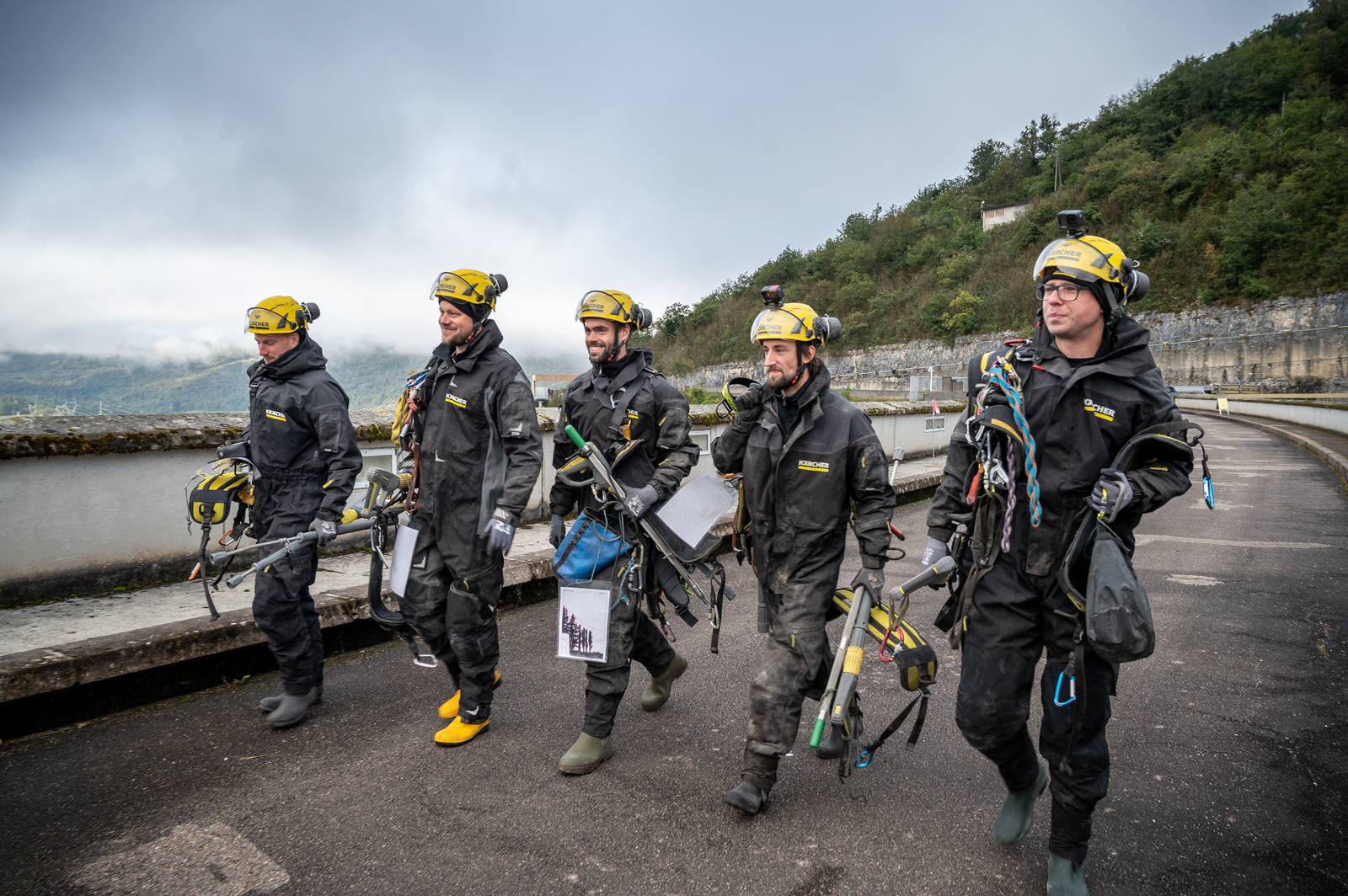
Thirst for adventure and expertise
The breadth of his subjects ranges from plants to animals to faces, which always tell a story too. For example, in Bamberg, Dauven created portraits of young people from different backgrounds on a bridge: a plea for a tolerant, open society. Another of his works is in the French port town of Sète. He used old photographs of seafarers and fishermen from the region as a template for it. Dauven and Kärcher have already collaborated on joint projects many times, but the technical challenges were never as great as in the latest work. Strict safety standards apply to the German-French team of surveyors and industrial climbers: “I like the democratic principle of my artistic direction. I work with specialists even though they aren’t artists. It’s the meeting point between engineering and creativity.” The physical challenge, combined with a thirst for adventure and expertise, is what binds the team together. Every handhold, every knot must be just right when the anchors are initially fixed onto the top of the wall; two ropes are dropped down a depth of five metres from each anchor. Over the course of several weeks, the team has planned the project meticulously and checked the equipment, but new, unexpected difficulties arise on-site every day, for which solutions have to be found.
Transient art
What makes Dauven’s art particularly special is its transience. While other artists want to immortalise their talent, Dauven plays with the fleeting nature of his works. How long his art remains visible is ultimately decided by the weather, the slope of the wall, the ambient temperature and sunlight. Only one thing is certain: his works will disappear over time. And there is another thing that makes them special: it is not museum visitors but hikers, holidaymakers and passers-by who become the viewers of his art, quite without meaning to. Klaus Dauven enjoys presenting this accidental encounter with his art, in exactly the same way he experienced it himself: as a magical stroke of luck.
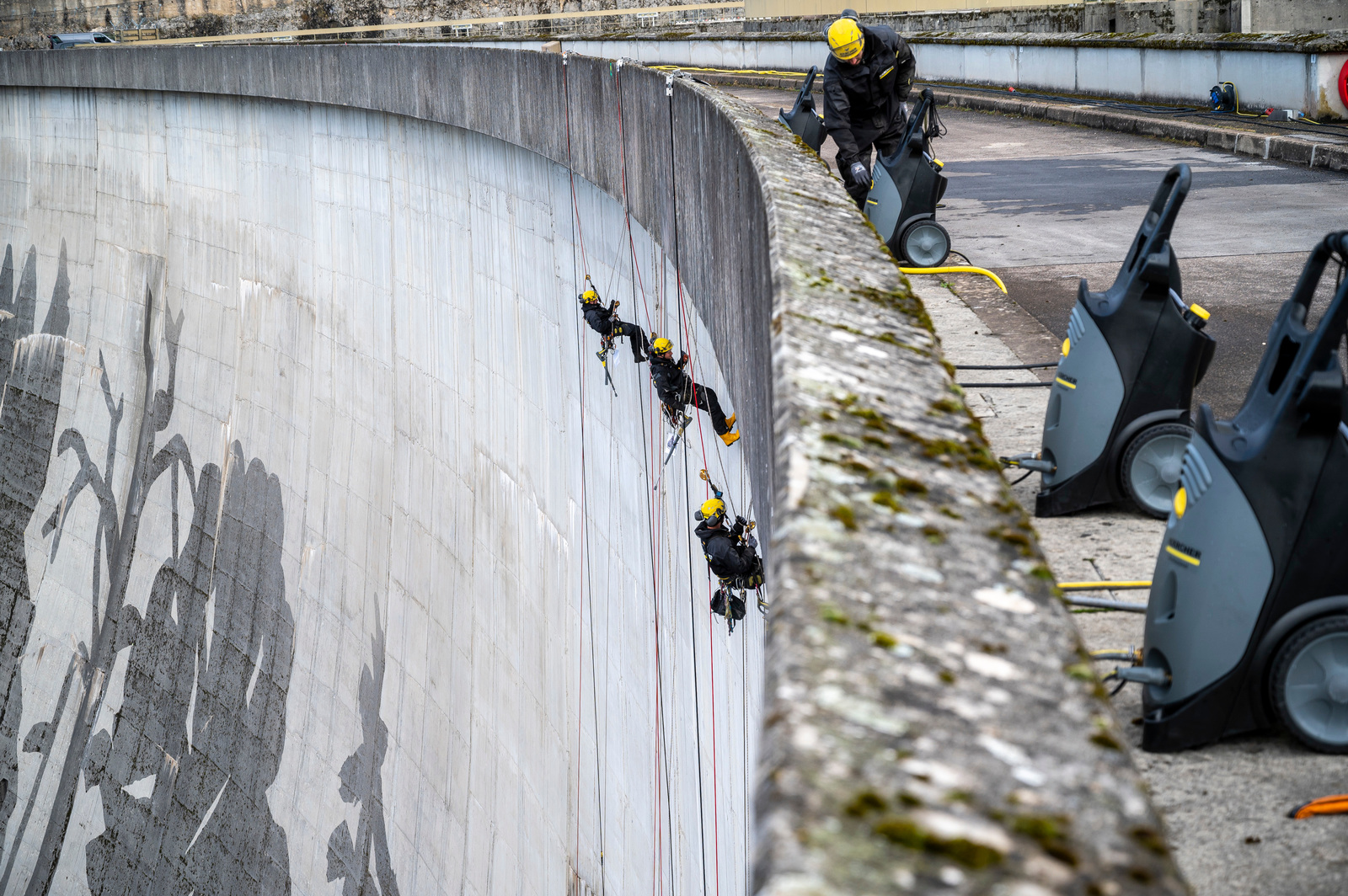
You may also be interested in:
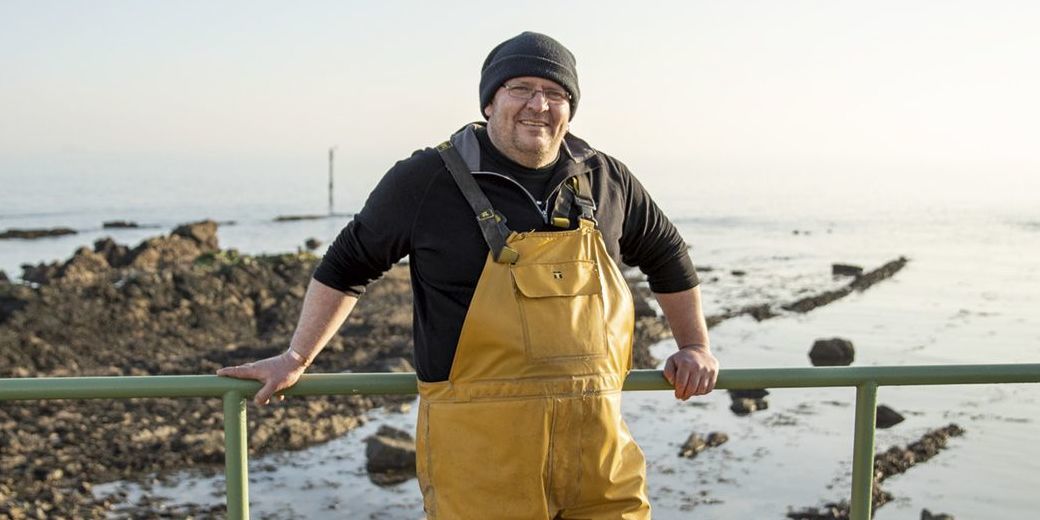
A life for the big catch
Each day fishermen sail out from the harbour in the small Scottish village of Pittenweem on the Firth of Forth estuary on the North Sea coast and catch lobsters and brown crabs. The work is hard, but nobody here would change it for the world.
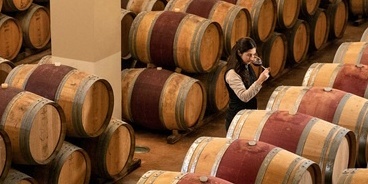
Queen of the Wine Cellar
Since the Middle Ages, vines for premium red wines have been ripening on the slopes of the La Braccesca vineyard under the blazing Italian sun, which was in ample supply last summer. Today, the grapes mature under the watchful eye of oenologist Fiamma Cecchieri, who always has plenty to do at the winery.
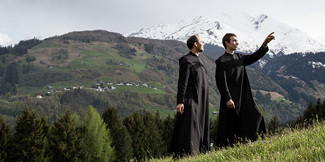
Reaching for the Sky
Many people aim to reach for the sky in life, but only few follow the path being trodden by Murezi Casanova. At the Benedictine Monastery in Disentis, Switzerland, the novice and trained landscape gardener takes care of the greenery and monastery garden, and will soon add the salvation of his fellow human beings to his list of duties.

